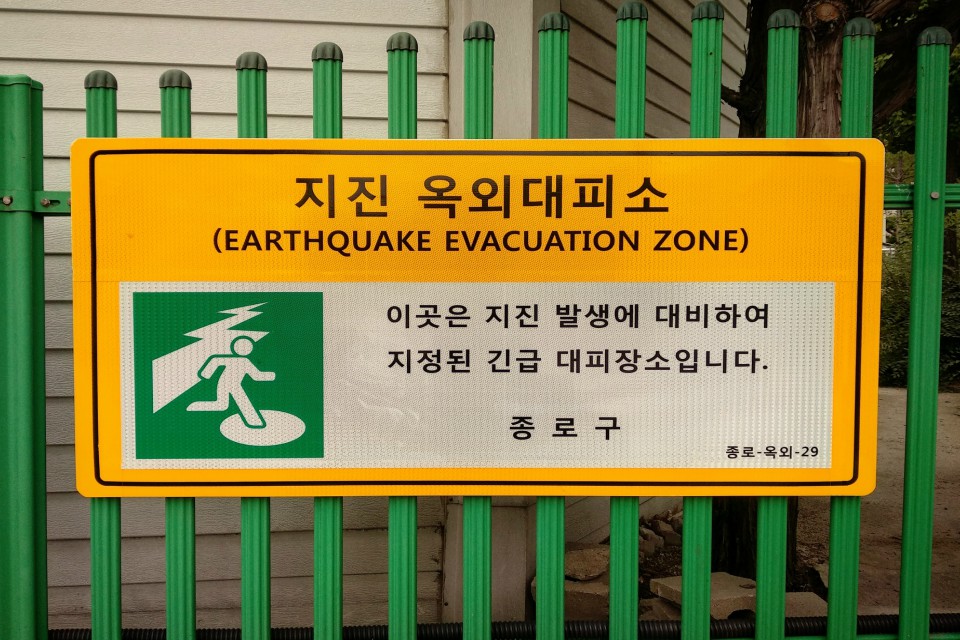
Is South Korea Prepared For Earthquakes?
“Students felt weak tremors then came out into the hallways for evacuation. But the teachers stuffed us back in the classrooms, saying that this was not an earthquake,” tweeted the below user, whose identity could not be confirmed beyond the fact that she attends an all-girls high school in Pohang.
https://twitter.com/___dovey/status/930714923004436480
Her tweets, which accused her school’s authorities of botching evacuation efforts, have gone viral on Twitter. “They told us to sit down,” the user wrote. “But we know what happens if we remain sitting.” That was a pointed allusion to the 2014 Sewol ferry sinking, which killed over 300 passengers. Most of those lost were high school students who were initially told by the crew to remain in their cabins instead of preparing to flee the sinking ferry.
The 5.4 earthquake in the city of Pohang on Nov. 15 was the second largest case since South Korea started recording quake data in 1978. According to the Ministry of Safety and Interior, 62 citizens were wounded and over 1,500 evacuated to local facilities. In a rare, but not unprecedented, move, the notoriously cutthroat suneung, the national university entrance exam, was postponed from Nov. 16 to a week later.
In a country that had grown accustomed to pitying neighboring Japan for its frequent earthquakes, the Pohang earthquake — just a little more than one year after the 5.8 one in Gyeongju, the largest recorded case — is raising widespread fears about the reliability of South Korea’s safety measures and its infrastructures.
Though there are some similarities, i.e. botched evacuation efforts and incompetent leadership, it is important to distinguish Wednesday’s earthquakes from the Sewol. There were no confirmed cases of severe student casualties, and many school authorities successfully led their students to safety, although there are still a handful of reports that some teachers forced their students to continue studying while the earthquakes were ongoing.
But the student’s tweets raise legitimate concerns about the preparedness of South Korean buildings against earthquakes. She claims that her school wasn’t designed to resist earthquakes; a 2017 report by the Ministry of Interior and Safety found that only 23 percent of 29,558 schools nationwide are built to withstand earthquakes — the lowest among facilities examined. As a side note, 65 percent of hospitals, 36 percent of public buildings and 78 percent of gas infrastructure were deemed safe.
The numbers are generally lower for privately owned buildings. In Seoul, around 30 percent of 622,660 monitored buildings — including houses and apartments — are built to withstand earthquakes.
The standard under South Korean posits that a seismically designed building, one built to withstand earthquakes, must be able to endure an earthquake up to 6 to 7 on the Richter scale. The law applies to structures higher than two stories, or larger than 500 square meters (this standard was only implemented earlier this year). Currently, nuclear power plants — many of which are concentrated in the densely populated southeastern region near Pohang and Gyeongju — are among the mostly closely scrutinized structures in the country.
According to Korea Hydro and Nuclear Power, South Korea’s 24 nuclear power plants are all built to withstand earthquakes stronger than 6.5. None of them have reported any damages in the aftermath of Pohang, where over 40 aftershocks, none as strong as 5.4, have taken place since Wednesday.
Cover image: An earthquake evacuation facility in Jongno-gu, Seoul. (Raphael Rashid/Korea Exposé)

